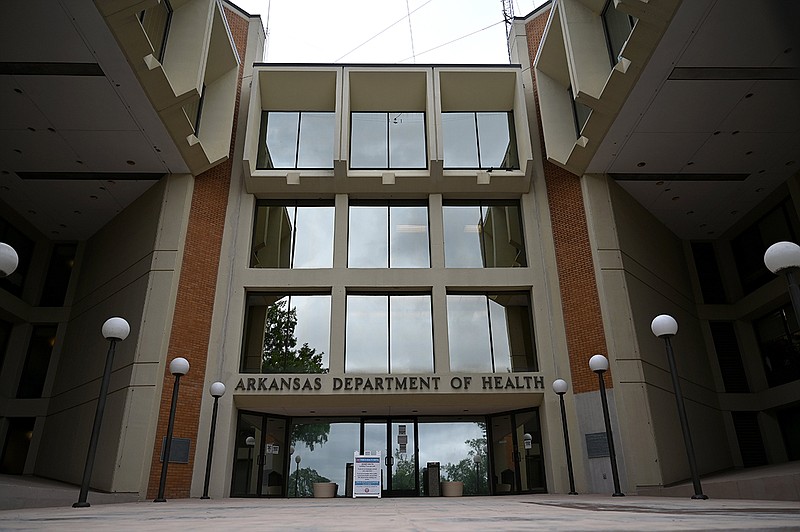The Arkansas Department of Health has started the process of a proposed $113 million update and expansion of its current Little Rock administrative headquarters built in the 196os.
Staff members are reviewing design firm proposals submitted during a request for qualifications, said Don Adams, the department's deputy director for administration.
"We have to go through certain procedures with the building authority," Adams said Wednesday. "We have a state architect and we have to keep them abreast. I am hopeful in a few months we will have completed the process of selecting a design firm."
It could take another year or more before detailed design work is completed and the department can put out a request for construction bids. The department estimates project completion by the end of summer 2027.
A feasibility study, completed in June 2021 by Polk, Stanley, Wilcox and Stocks Mann, presented seven options that ranged from demolishing the complex and rebuilding to keeping all of the buildings while adding three floors to the 1977 structure.
The department decided on an option that includes adding three new floors, demolishing some structures and renovating the original "h"-shaped building and 1977 addition.
A 2016 assessment by the Arkansas Building Authority, now a division of the Department of Transformation and Shared Services, found that despite being well-maintained, a significant investment in the complex was needed to modernize and properly maintain the building, Adams said during a Board of Health meeting in May.
Adams said the department plans to increase the size of the headquarters complex by about 40%, from 266,422 square feet to 371,499 square feet.
He said the department has about 2,000 employees, 800 of whom work at the Little Rock headquarters.
The expansion would allow the department to move the 200 employees who now work in the Freeway Medical Tower in Little Rock to the main headquarters and then sell or lease the 64,000 square feet of space the department owns at the tower.
About 100 employees of department boards and commissions who work in leased space elsewhere could also be moved to the expanded headquarters, he said.
A parking deck option would increase the project to about $150 million.
The department will use several sources of revenue to cover the down payment and cost of the projection, Adams said.
This includes a vital records fee that was once used in combination with bond payments to pay for the public health laboratory facility built in 2005.
The department received approval to move the vital records fees to a "State Health Department Building fund," according to Danyelle McNeill, a spokesman for the department.
There is about $10 million in that fund and it produces about $2.7 million per year.
Adams said other funds will come from indirect funds such as federal, non-federal and cost allocations.
"We have indirect fees," Adams said. "We intentionally have not been spending as much as we have been receiving."
This includes setting aside funds for grants that fall under administrative needs, he said.
The department estimates that together the funds could produce an additional $2.2 million annually for the building payment. An additional $9 million will be used for the down payment.
Operational costs are not a part of the $113 million estimate for the project, Adams said. However, he said making the current facility more efficient should offset that cost.
"Our building is now over 50 years old and there is a lot of upkeep," Adams said. "It is not an efficient building. We feel confident that the upkeep and maintenance [of a new building] will be less than the current."
Adams said the building uses an outdated boiler system that requires a 24/7 boiler operator on site.
Updates to the building wouldn't require a boiler operator.
Outdated cooling towers and chilling systems also use more energy, he said.
The building renovation would refurbish insulation, windows and lighting.
Moving employees to one campus also would create more efficiency, Adams said.
